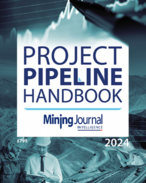This article is 8 years old. Images might not display.
Held at the swanky Royal Pines Resort, the annual Resources Rising Stars investment forum has a number of unique features which set it apart from other mining conference, with the age of the audience an obvious difference, and their share-trading habits a second.
While many mining conferences are dominated by professional advisers, service companies and equipment retailers, the Gold Coast event is almost totally dominated by rich retail investors with spare time and spare cash to play the market, as well as a deep and discerning knowledge of mining.
In a way, the Gold Coast conference is a mining event where the audience is more interesting than the speakers, and that audience can be devastating in its criticism because the age factor means that mining-company executives on the podium are speaking to people who could be their parents (or grandparents in some cases).
Drawn largely from the adjoining beachside suburbs of Queensland’s Gold Coast, south of Brisbane, the audience this year was also a clue to the returning interest in mining stocks, with the crowd up 25% on last year.
The person most came to hear because he’s made a lot of them richer, was Bill Beament, chief executive of Northern Star Resources, easily the most successful Australian gold miner in the past 50 years.
A regular at the Gold Coast event over the past few years, Beament has attracted a strong following among self-funded retirees, some who bought Northern Star in its early years as a true penny dreadful with a price of A5c (US3.6c), a fraction of today’s A$4.42.
Having bolstered a few fortunes, and made life more comfortable for the less wealthy among the largely retired crowd, the success of Northern Star, and the near-record Australian-dollar gold price, ensured that other gold stocks, along with a handful of lithium, graphite, potash and zinc explorers, attracted the closest attention of people there to do more than listen – they were there to place their bets with some trading on their iPads during presentations.
And that’s when things get interesting, because while Northern Star has been a big winner over the past few years, the golden oldies of the Gold Coast are wise enough to know that in mining it’s often best to not assume that today’s winner will be tomorrow’s winner.
So, what were the grey-haired punters looking at during their two-days at Royal Pines? Gold first, obviously, but that gave them a wide choice which seemed to produce an investment ‘shopping list’ that looked like this:
Saracen Mineral Holdings: a fast-growing gold stock which is planning to double output -to around 300,000 ounces a year thanks to the rapid re-development of the Thunderbox mine in Western Australia. All-in sustaining costs from Thunderbox and the company’s older Carosue mine are tipped to be US$785 an ounce (A$1075/oz) which should yield a handsome profit margin at today’s gold price.
Capricorn Metals: a relative newcomer to the Australian gold game, but also a company with a well-known management team, equally well-known major shareholders and a gold deposit quietly waiting in the wings for many years to be developed. The key asset of Capricorn is the big but low-grade Karlawinda project close to BHP Billiton’s Newman iron ore mining centre. Fresh capital (A$12.6 million) has been recently raised with successful gold miner Regis Resources emerging with a 9% stake, along with successful nickel miner, Kerry Harmanis, who has taken a big personal stake in Capricorn. An existing 650,000oz resource might be enough to start mining but the plan is to expand that base and add high-grade material to the average ore grade of just 1.1g/t.
Millennium Minerals: operator of the Nullagine gold mine in Western Australia which yielded 91,642oz at a cost of A$1175/oz in 2015, indicating a profit margin per ounce of more than A$500. The company is now debt free after repaying A$37 million in loans over the past 12-months and expects to produce between 80,000-85,000oz of gold this year while also investing heavily in exploration around what was one of WA’s earliest gold-producing provinces.
Other commodities on the investment shopping list included the current favourites of lithium, potash and graphite plus an interesting return of zinc via two new corporate names run by familiar names from earlier eras.
Energia Minerals, which is moving towards a development decision at its Gorno project in Italy, caught the attention of a few investors thanks to signs of a zinc-price revival, as did Marindi Metals, which is revisiting the Newman project in WA.
Both zinc companies are run by people previously best known for their involvement with the ill-fated Kagara Zinc, which foundered in the last zinc-price collapse. Kim Robinson is running Energia and Joe Treacy is in charge of Marindi.
How appropriate is that?! Old zinc projects being re-born. Old zinc-company managers trying to do the same thing, and old punters hoping for a win.
And that leaves a final question. Which company did do best on the market during the Gold Coast conference?
FAR Ltd, if you must ask, and that’s a bit embarrassing actually because it was the only oil and gas company presenting and it got a small lift from the higher oil price at a time when gold and most other minerals lost ground.
You can’t win them all – and that’s irrefutable knowledge that comes with age.























